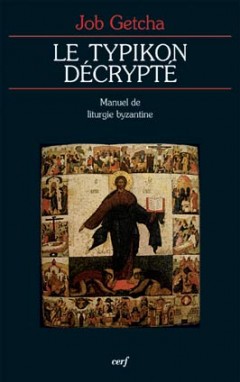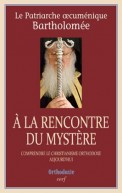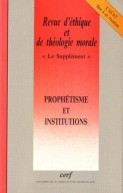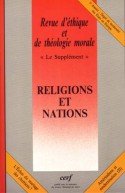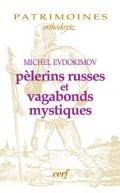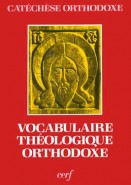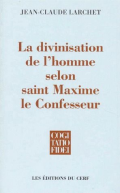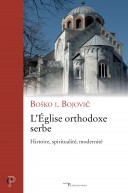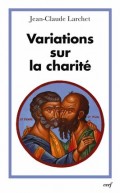Typikon décrypté (Le)
de Job Getcha
Collection Liturgie - N° 18
352 pages - oct. 2009
38,00€
La liturgie byzantine, par sa beauté, sa richesse et sa profondeur, intrigue, inspire ou passionne un grand nombre de chrétiens aujourd'hui ; elle n'en demeure pas moins souvent inaccessible, voire incompréhensible. De premier abord, le Typikon — le livre liturgique contenant l'ordo de la célébration liturgique — est certes illisible. D'où la nécessité, pour le néophyte ou le fidèle souhaitant approfondir sa pratique, de le décrypter. C'est le but du présent ouvrage. Élaboré sur la base de cours prodigués à l'Institut de théologie orthodoxe Saint-Serge, il couvre la célébration des offices de l'année liturgique byzantine : l'office divin, les fêtes, le cycle pascal. Le déroulement et la composition des offices liturgiques sont d'abord situés dans le contexte de leur développement historique, avant d'être analysés, dans le détail, du point de vue de la pratique. Les Églises orthodoxes à travers le monde utilisent toutes, à l'heure actuelle, les mêmes textes liturgiques et ne connaissent — outre des langues et des mélodies différentes — que des variations mineures dans les usages, qu'elles soient du courant « grec » ou « russe ». Ce précis de liturgie byzantine, le premier publié en français, comprend en fin de volume une abondante bibliographie et un glossaire qui tente de fixer un vocabulaire technique liturgique encore assez flottant dans notre langue.
--
Byzantine liturgy, by its beauty, richness, depth and intrigue, inspires or fascinates many Christians today. However it often remains inaccessible, even incomprehensible. At first glance, the Typikon - the book of liturgy containing the ordo of liturgical celebration – is certainly unreadable. Which is why it is necessary for the neophyte, or the faithful who wish to deepen their practice, to decode it. That is precisely what this book does. Based on lessons given at the Institut de théologie orthodoxe Saint-Serge, it covers the celebration of services during the Byzantine liturgical year: the divine office, special occasions, the Paschal cycle. The procedure and the contents of the liturgical services are first placed in the context of their historical development, before being analysed in detail from the practical viewpoint. All the Orthodox Churches throughout the world use, at the present time, the same liturgical texts and know only minor variations in usages - apart from different languages and melodies – whether they be of the Greek or Russian tradition. This handbook of Byzantine liturgy, the first published in French, contains a rich bibliography and a glossary at the back of the book, contributing to establish a technical liturgical vocabulary that is still rather vague in our language.
--
Byzantine liturgy, by its beauty, richness, depth and intrigue, inspires or fascinates many Christians today. However it often remains inaccessible, even incomprehensible. At first glance, the Typikon - the book of liturgy containing the ordo of liturgical celebration – is certainly unreadable. Which is why it is necessary for the neophyte, or the faithful who wish to deepen their practice, to decode it. That is precisely what this book does. Based on lessons given at the Institut de théologie orthodoxe Saint-Serge, it covers the celebration of services during the Byzantine liturgical year: the divine office, special occasions, the Paschal cycle. The procedure and the contents of the liturgical services are first placed in the context of their historical development, before being analysed in detail from the practical viewpoint. All the Orthodox Churches throughout the world use, at the present time, the same liturgical texts and know only minor variations in usages - apart from different languages and melodies – whether they be of the Greek or Russian tradition. This handbook of Byzantine liturgy, the first published in French, contains a rich bibliography and a glossary at the back of the book, contributing to establish a technical liturgical vocabulary that is still rather vague in our language.
- Dimensions : 135x215x25
- ISBN : 9782204089012
- Poids : 450 grammes
Avec la collaboration de : Hiéromoine Macaire
DU MÊME AUTEUR
Revue d'éthique et de théologie morale 223
200 pages - mars 2003
Revue d'éthique et de théologie morale 228
420 pages - juin 2004
> VOIR TOUS LES LIVRES DE l'AUTEUR
DANS LA CATÉGORIE INTRODUCTION AUX CHRISTIANISMES
Personne et nature
La Trinité — Le Christ — L'homme Contributions aux dialogues interorthodoxes et interchrétiens cont
de Jean-Claude Larchet
416 pages - déc. 2011
Divinisation de l'homme selon saint Maxime le Confesseur (La) - CF 194
de Jean-Claude Larchet
768 pages - mars 1996

